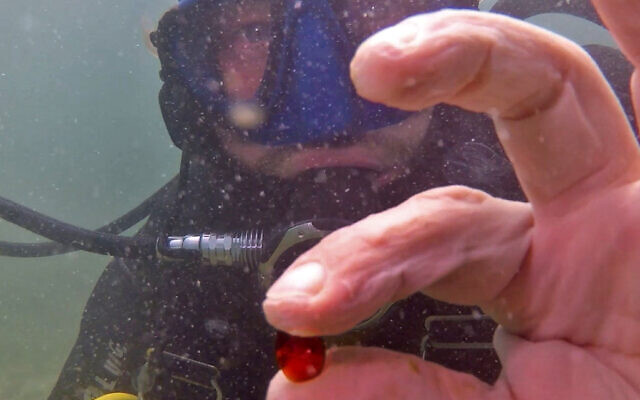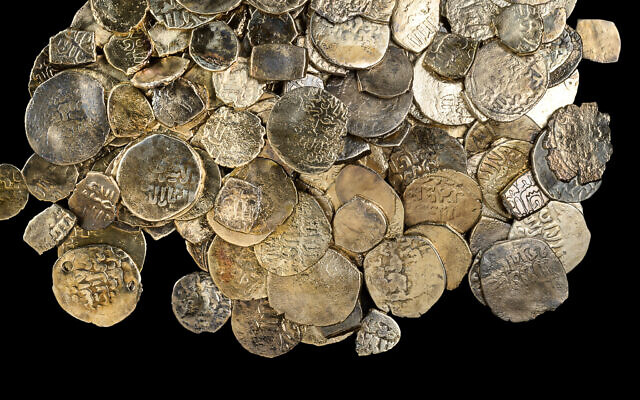1,700-year-old coins, Jesus ‘Good Shepherd’ ring, found in shipwrecks off Caesarea
Marine archaeologists diving off the coast of Caesarea have discovered a number of ancient artifacts in recent months, including some dating back to the third century, the Israel Antiquities Authority revealed on Wednesday.
The finds came from the wrecks of two ships that went down near the northern coastal town during the Roman and the Mamluk periods.
“The ships were probably anchored nearby and were wrecked by a storm,” said Jacob Sharvit and Dror Planer of the IAA’s Marine Archaeology Unit.
“They may have been anchored offshore after getting into difficulty, or fearing stormy weather, because sailors know well that mooring in shallow, open water outside of a port is dangerous and prone to disaster,” they added.
Some of the most intriguing finds include those believed to be personal effects of those on board.
Archaeologists discovered a thick gold ring with an inlaid green gemstone that depicts a young shepherd boy dressed in a tunic with a ram or sheep on his shoulders.
The image is believed to be the Christian symbol of the “Good Shepherd,” an early depiction of Jesus as a benevolent figure, suggesting its owner was likely an early Christian.
“Israel’s coasts are rich in sites and finds that are immensely important national and international cultural heritage assets,” said Eli Eskozido, director of the Israel Antiquities Authority.
“They are extremely vulnerable, which is why the Israel Antiquities Authority conducts underwater surveys to locate, monitor and salvage any antiquities.”
The wrecked hulls of the two ships and their cargos were discovered scattered just four meters underwater, said the IAA.
The treasure discovered included “hundreds of silver and bronze Roman coins from the mid-third century CE and a large hoard of silver coins from the Mamluk period.”
Archaeologists also discovered a bronze figurine in the form of an eagle, numerous bronze bells, pottery vessels and a large iron anchor.
A red gemstone that was believed to have once been set inside a ring was also discovered, with a carved image of a lyre, known in the Jewish tradition as “David’s Harp” and in Greek mythology as “Apollo’s Lyre.”
Eskozido appealed to those who dive, snorkel and swim along Israel’s shores to be mindful of potential artifacts and report any findings to authorities.
“We appeal to divers: if you come across an ancient find, take a note of its underwater location, leave it in the sea and report it to us immediately,” he said. “The discovery and documentation of artifacts at their original find spot has tremendous archaeological importance and sometimes even a small find leads to a great discovery.”




Comments
Post a Comment